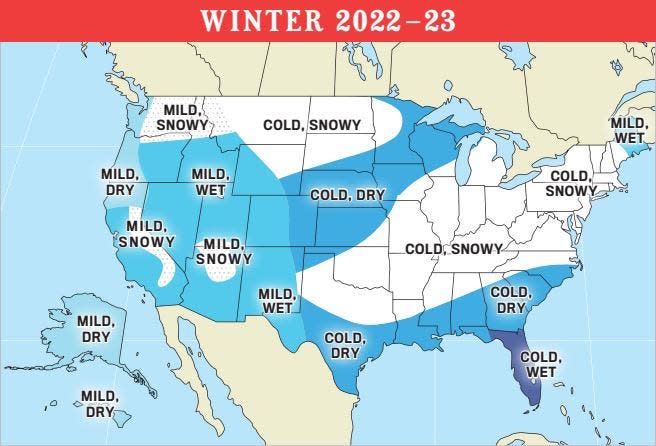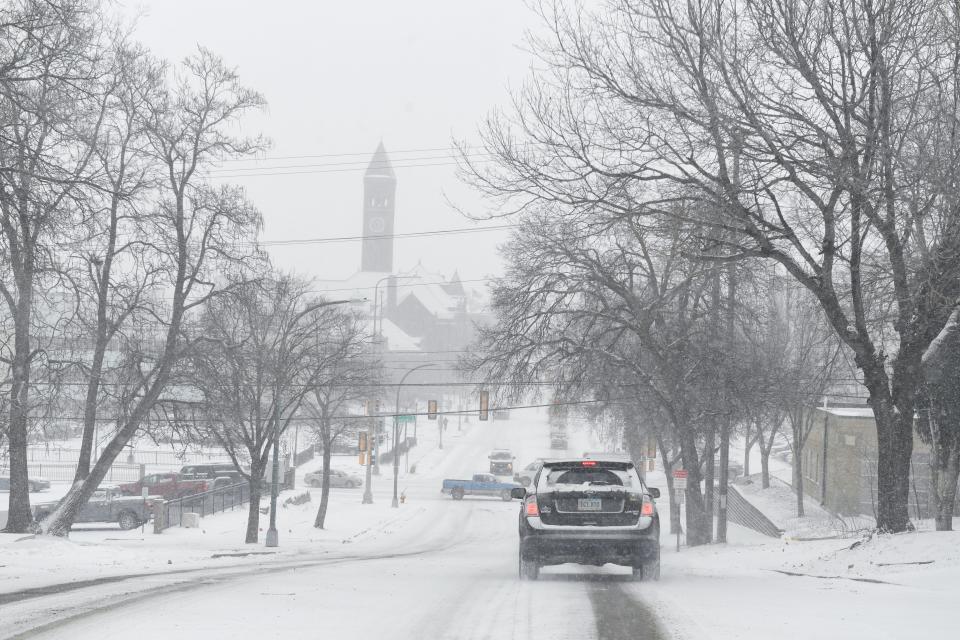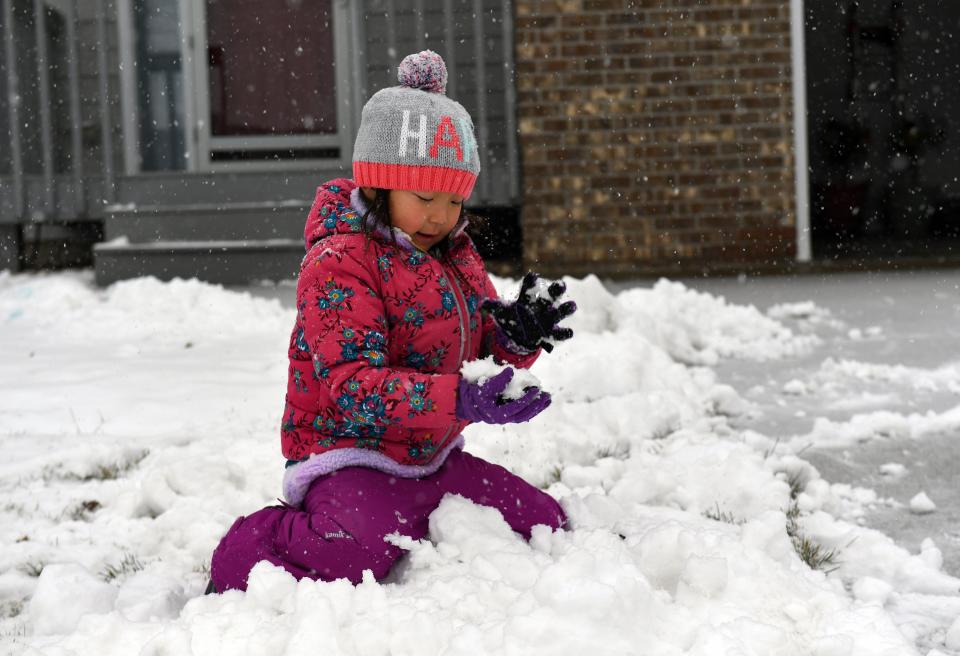Expect a colder-than-normal winter in South Dakota, according to 'Old Farmer's Almanac'
The "2023 Old Farmer's Almanac" says East River residents should prepare for a cold and dry winter.
Temperatures are predicted to be colder than normal for the Heartland region, which includes Sioux Falls, Aberdeen and Watertown. As far as precipitation goes, it's going to be a West River-East River split with the west getting more precipitation and the east staying drier than average, according to the almanac.
What is 'The Old Farmer's Almanac' forecast for this winter in South? Dakota?
It's going to be cold. How cold it gets depends on where you're at in the state.
The High Plains region for "The Old Farmer's Almanac" includes much of western South Dakota including Rapid City, where the winter is predicted to be colder than normal, with the coldest periods coming in late November, early December and January into February.
More weather: Sioux Falls' sky turned green amid severe weather. See the strange phenomenon in photos
The coldest average temperature in western South Dakota is 19 degrees for the month of February.
Sioux Falls, Aberdeen and Watertown, along with the rest of the Heartland region, will see their coldest month in January with an average temperature of 22 degrees. That's eight degrees below average, according to the "Old Farmer’s Almanac."

What about snow in South Dakota?
Snowfall for the High Plains including the Rapid City area will be above normal but below normal for eastern South Dakota.
Mid-to-late November and January will be the snowiest in western South Dakota along with some snowy patches in early February, according to "The Old Farmer's Almanac."
The snowiest periods for the Heartland will be in late November, early to mid-January and February.
More: Derechos, rare haboob raise concerns: Is the Midwest headed to another Dust Bowl?

How does 'The Old Farmer’s Almanac' predict weather?
When the first "Old Farmer’s Almanac" was published in 1792, Robert Thomas came up with his own formula for predicting next year’s weather.
Since then, the publishers have updated the formula with the current technology including solar science, climatology and meteorology. They compare solar patterns and historic weather conditions over a 30-year-period to make their predictions, according to "The Old Farmer's Almanac."
The almanac breaks the United States into 18 regions for their weather forecasts.

While "The Old Farmer’s Almanac" prides itself on having an 80% accuracy rate, last year they were 94.4% right in their predictions of precipitation departure, according to this year's book. As far as temperature departure in representative cities in each region the publication had a total accuracy rate of 72.2%
So if you’re worried about the almanac’s winter prediction being off, just remember to check a woolly worm’s orange stripe next time you’re out.
Got a story idea from your community? Email reporter Alfonzo Galvan at agalvan@argusleader.com or follow him on Twitter @GalvanReports.
This article originally appeared on Sioux Falls Argus Leader: Old Farmer's Almanac forecast predicts cold winter for South Dakota

